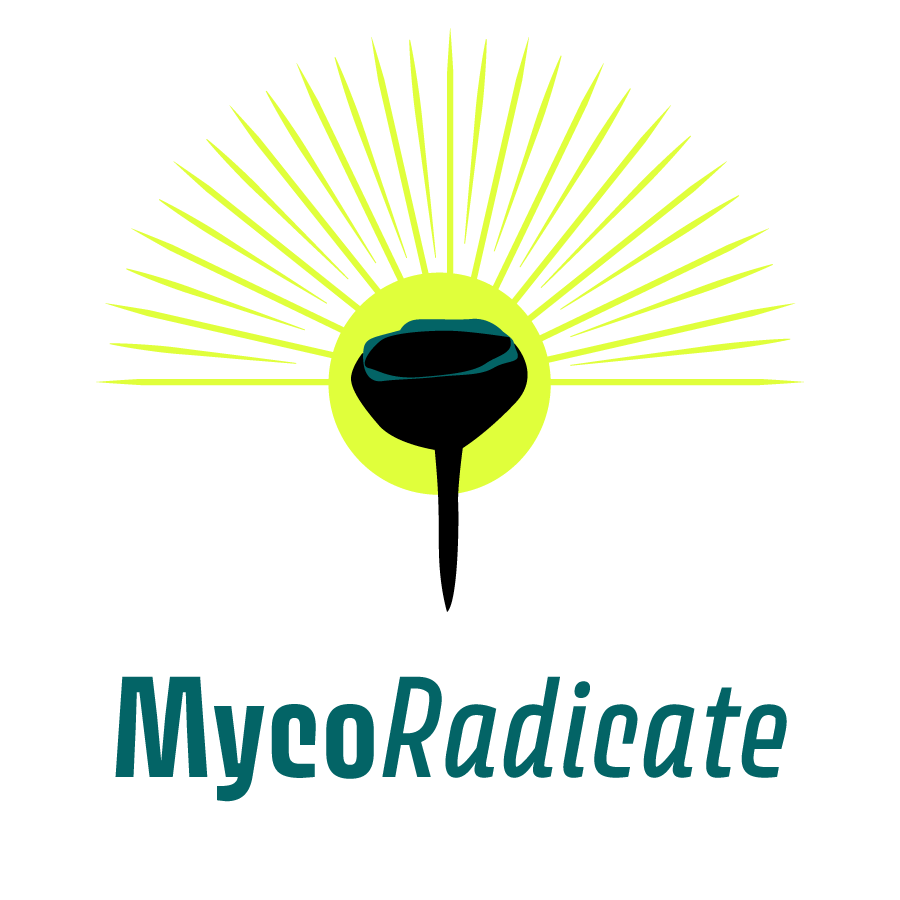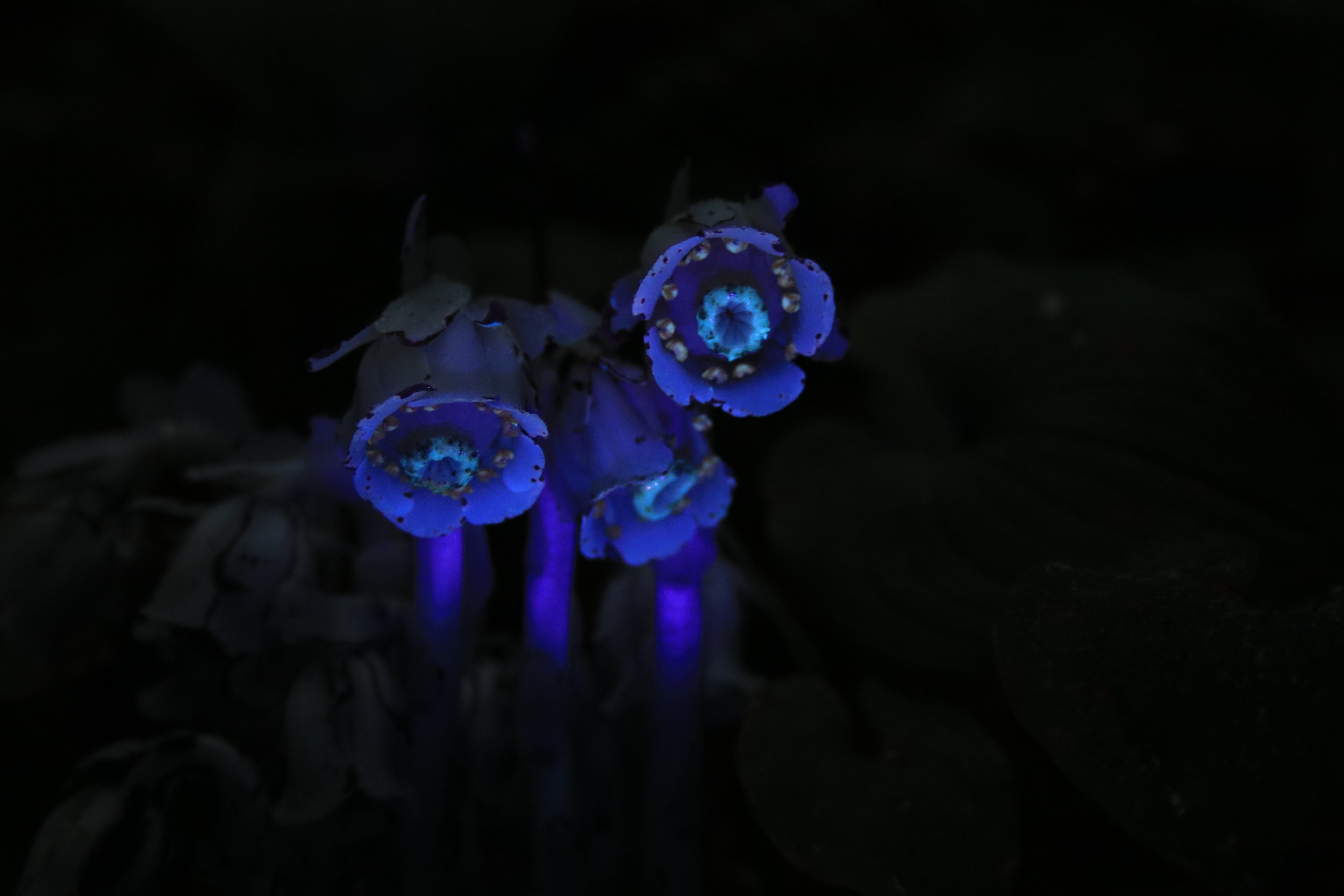Foray Log 819.2022- Hebo UV Nightwalk
One of the highlights of this year has been the UV Night Foray I planned for the WVMS Funga Study group. Our group gathered at dusk at the trailhead to hike down a trail and wait for dark. It is only after dark that our adventure began and we lit up the forest in Technicolor wonder.
Summertime is a great time to take a walk in the forest at night. It is usually warm and dry and because there is not a lot of fungi fruiting in the PNW, it offers something to do while we wait for the rains to come. UV lights add to the excitement of this type of walk because it feels like a celebration or party in the woods. If you really want to plan an exciting evening wear your favorite light reactive clothing to add to the atmosphere.
When exploring the woods at night you will find that the darkness fills every corner of the forest. But when a UV light catches something that reacts, it really lights up. I have noticed that white or light colored objects will react in a purple/blue color but then there are some other colors that will surprise you. For instance some broad leaves will turn bright red, some mycelium will fluoresce bright orange and as you can see with these Monotropa uniflora, the stigma and stamen show turquoise and tangerine. You just need to move slow and point the light at everything to see what glows.
Lichen that covers tree bark or resupinate fungi on logs seem to be the best UV light reactive subjects in the dry summers. Even the sap from trees will light up. Pay attention to the ground and soil, it will surprise you on how much will react to UV light. There are insects, minerals and other things that light up.
The colors in light visible to humans (400-700nm) are determined by the light wavelength. Humans can see a limited spectrum from red to violet compared to other creatures like birds and insects. There are other colors beyond our visible spectrum that exist and are invisible to us. As you can see in this graphic, there is a range of color above the red that is called infra-red. And the color below our visible spectrum of violet is called ultraviolet. This is where the UV lights work to fluoresce pigments in the fluorescent or phosphorescent to emit visible light.
“The ultraviolet spectrum is broken down into subcategories depending on wavelength:
450 - 400 nm Violet, (visible light)
400 - 320 nm UVA, Long Wave, Black Light
320 - 280 nm UVB, Medium Wave
280 - 100 nm Short Wave” (https://www.gloeffex.com/blogs/technical/uv-spectrum)
“Ultraviolet radiation is divided into three regions: UV-A: 315-400nm, UV-B: 280-315 nm, and UV-C: 100-280 nm. UV can be associated with adverse health effects depending on duration of exposure and the wavelength.” (https://www.safety.rochester.edu/ih/uvlight.html) UV lights sold non-commercially are readily available and pretty safe to use because they have a longer wavelength than the more damaging industrial UV lights with shorter wavelengths than 320nm. Black Lights are often used in detecting counterfeit bills, at nightclubs and concerts, and even as a way to detect pet stains. If you are looking to purchase a UV light for a night foray just make sure your light is between 320nm-400nm or UVA. The longer the wavelength the safer it is. UVC lights are the most dangerous and are only used by trained professionals in protective gear. UVC lights include germicidal lamps that are used to disinfect the air.
The lights that most of us use are these rechargeable multi-lights we purchased off Amazon. They are pretty bright with the option to focus the beam. I liked that they are rechargeable so I don’t have to waste batteries and the charge lasts for about 10 hours. It is best if everyone in the group has their own UV light so people can investigate things on their own.
I encourage you to go on a night walk, even if it is just in your neighborhood. If you are interested you can also join the iNaturalist group UV Fluorescent Organisms, and show off the observations you make. https://www.inaturalist.org/projects/uv-fluorescent-organisms When you get out there and look at the world at night you will find more than fungi that glow. Look for fluorescent insects and rocks too!
Resources:
https://www.safety.rochester.edu/ih/uvlight.html
https://www.glowpartyworld.com/are-black-lights-safe
https://www.livescience.com/50326-what-is-ultraviolet-light.html
https://www.gloeffex.com/blogs/technical/uv-spectrum
https://www.essilor.co.uk/blog/your-life-and-eyes/is-uv-light-dangerous-for-your-eyes
http://www.urineeradicationsystems.com/peedar-news-tips/why-does-uv-light-make-things-glow-903/
https://www.mycoradicate.com/fungagraph-blog/foray-log-662021-big-meadow-pbr5t-387ew-e6mdf





